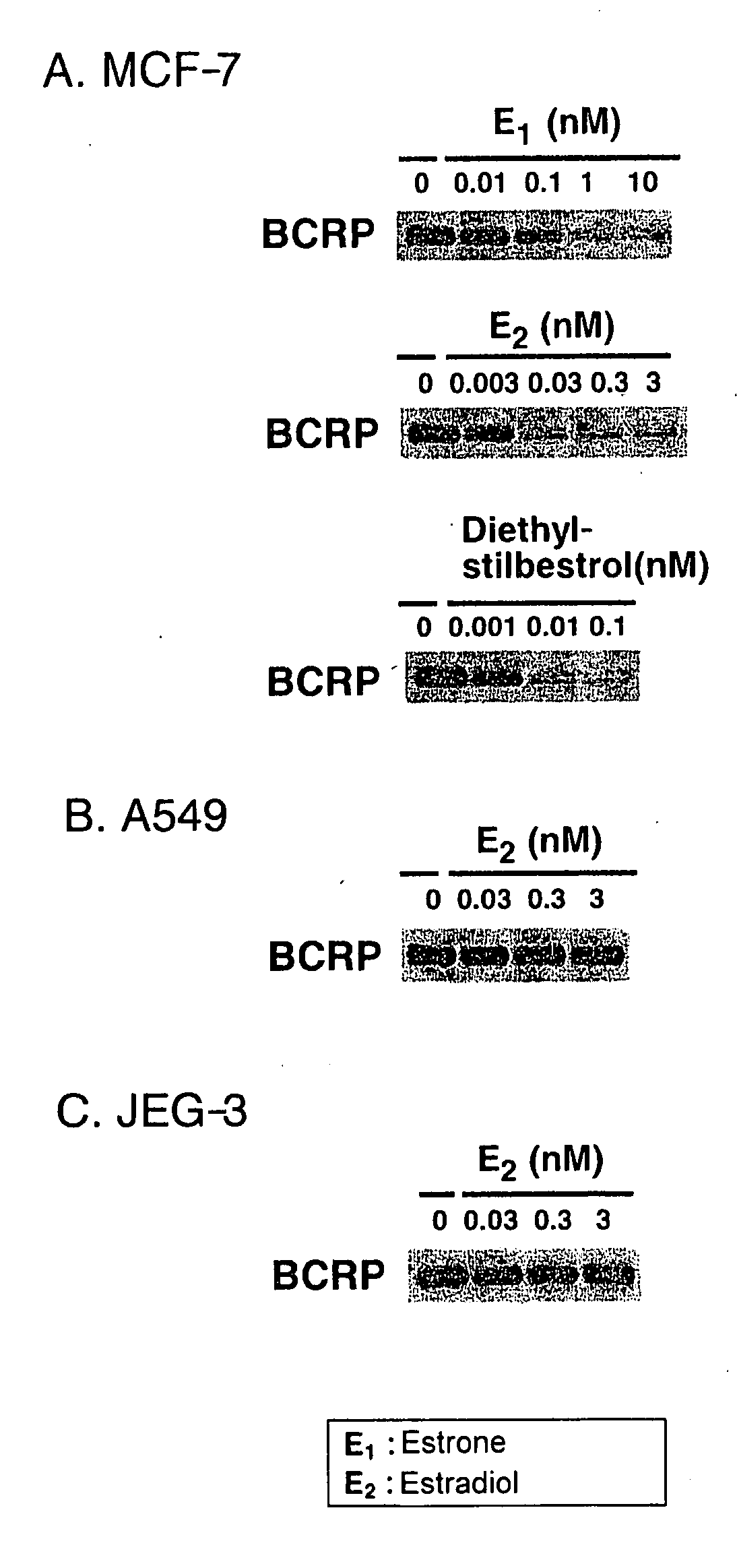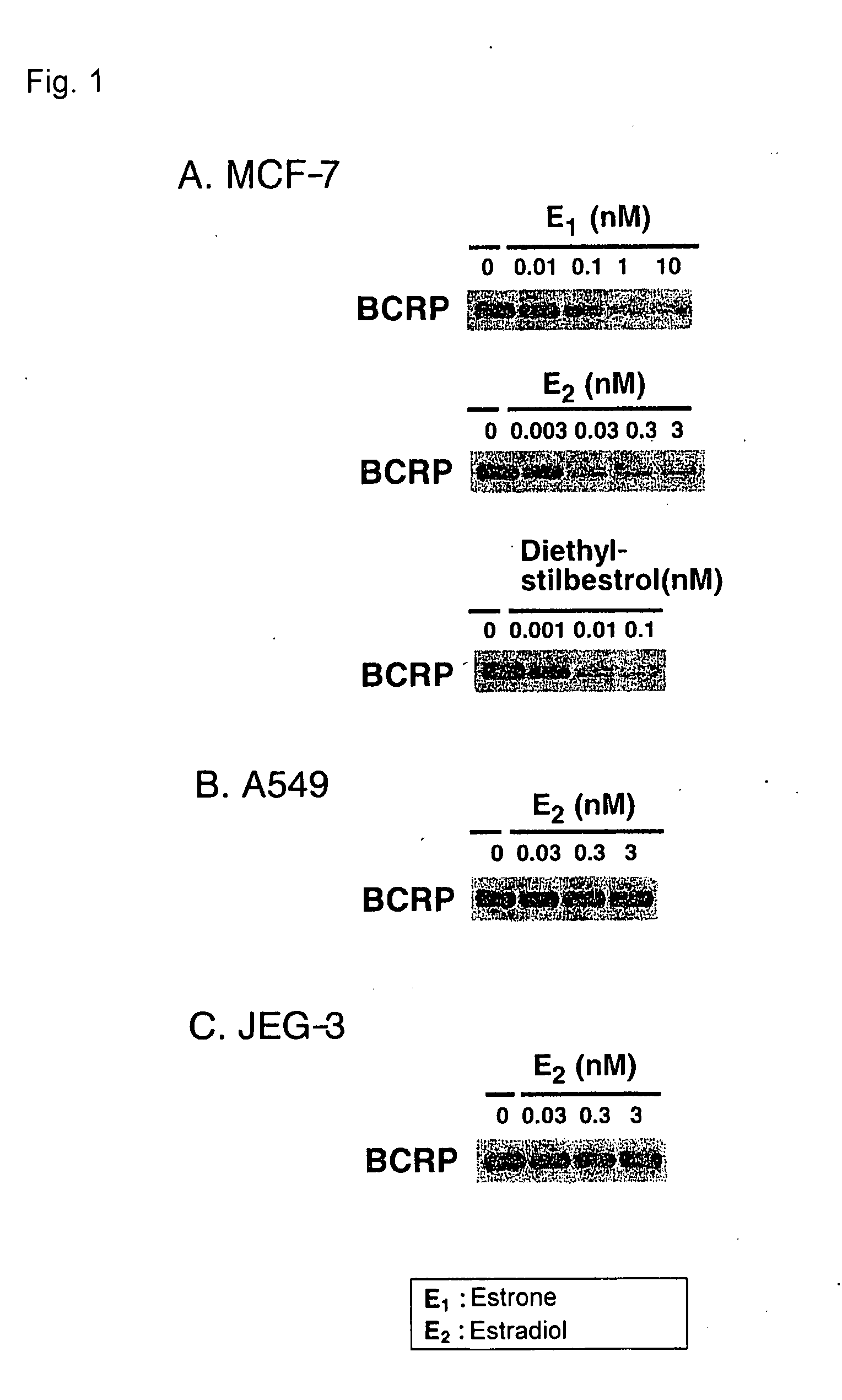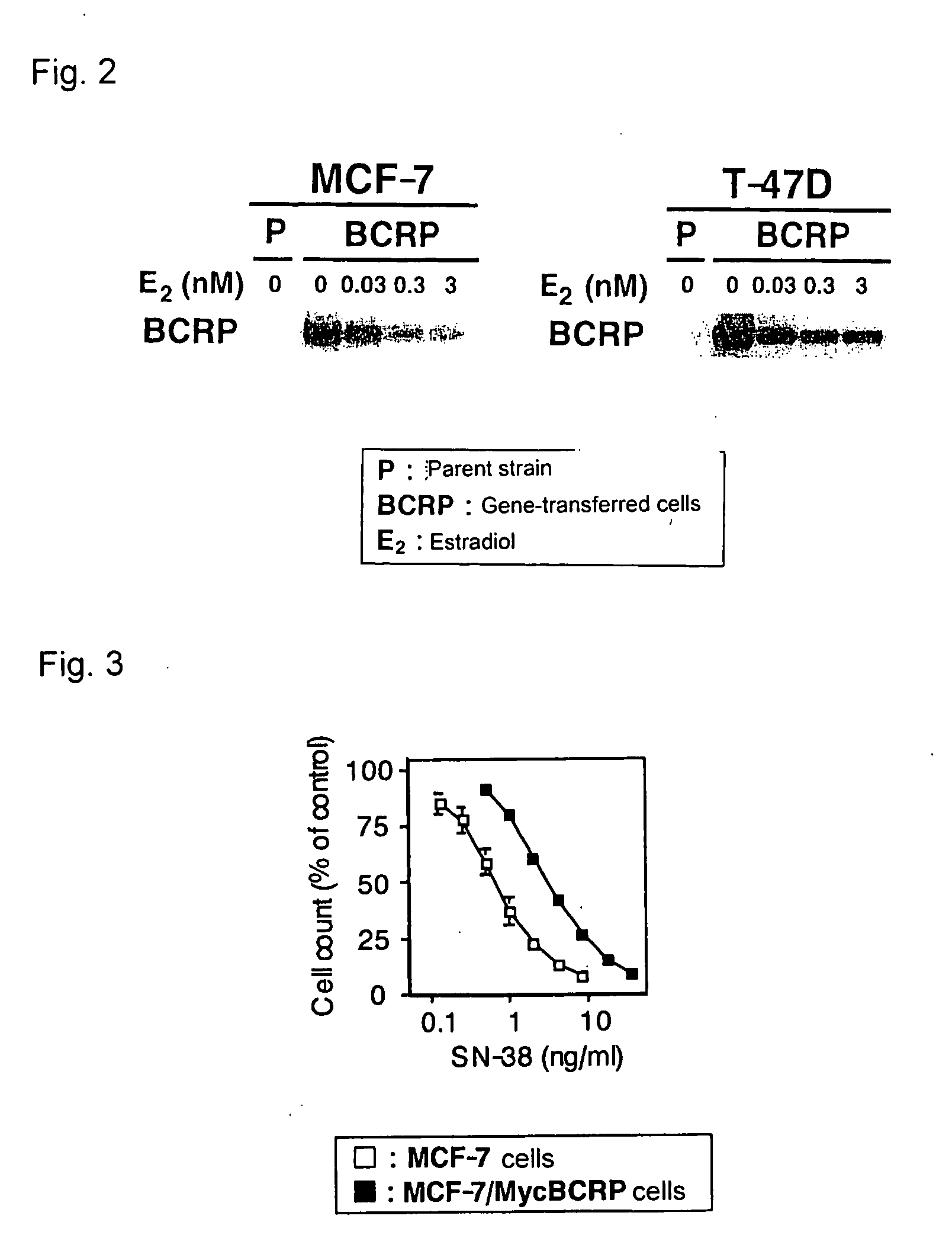Antagonist Against Tolerance to Anticancer Drugs
a technology of anticancer drugs and tolerance, applied in the field of anticancer drugs, can solve problems such as efficacy reduction, and achieve the effects of reducing adverse side effects, sufficient drug efficacy, and restoring the effect of anticancer drugs
- Summary
- Abstract
- Description
- Claims
- Application Information
AI Technical Summary
Benefits of technology
Problems solved by technology
Method used
Image
Examples
example 1
Suppression of Expression of Endogenous BCRP
[0040]Western blotting was performed to investigate the effect of a steroid hormone and a female hormone on MCF-7, A549, and JEG-3 cells, which intrinsically express BCRP at high level, in terms of the expression level of BCRP. Estrone or estradiol was added to a phenol red-free DMEM medium containing fetal bovine serum (7%) which had been treated with activated carbon to remove steroids, and incubation was performed for 4 days. Afterwards, expression level of BCRP was determined through the Western blotting technique using an anti-BCRP antibody. In each lane, 30 μg of protein was electrophoresed.
[0041]In the presence of estrone or estradiol, expression level of endogenous BCRP in MCF-7 cells decreased to 10 to 20% the level as measured for control. However, in other cells, no such changes were observed (FIG. 1).
example 2
(1) BCRP Gene
[0042]In the present invention, human BCRP cDNA, which had been isolated from human placenta mRNA through PCR, was employed. In PCR, the materials employed were human placenta Marathon-ready cDNA (Clontech Co.) (as a template); 5′-side primer 1S of human BCRP cDNA (CCT GAG ATC CTG AGC CTT TGG TT) (SEQ ID No: 1) and 3′-side primer SAS of human BCRP cDNA (GAT GGC AAG GGA ACA GAA AAC AAC A) (SEQ ID No: 2) (as two oligonucleotides serving as primers); and an Advantage cDNA PCR kit (Clontech Co.). The PCR conditions were as follows: 1×94° C. (1 min)→35×{94° C. (30 sec)+68° C. (3 min)}→1×{94° C. (30 sec)+68° C. (15 min)). As a result, an amplified cDNA of about 2,150 bp was obtained. The thus-obtained cDNA was subcloned into a PCR2.1 plasmid, and the nucleotide sequence of the cDNA was determined by means of ABI PRISM377 DNA sequencer (Applied Biosystems Co.). Sequencing of mutually independent 4 clones was performed. With any portions considered to be PCR-induced mutations h...
example 3
Suppression of Expression of Exogenous BCRP
[0048]Western blotting was performed to determine the expression level of BCRP in MCF-7 / MycBCRP cells and T-47D / MycBCRP cells. Estradiol was added to a phenol red-free DMEM medium containing fetal bovine serum (7%) which had been treated with activated carbon to remove steroids, and incubation was performed for 4 days. Afterwards, expression level of BCRP was determined through the Western blotting technique using an anti-Myc antibody (FIG. 2).
[0049]In the presence of estradiol, expression levels of exogenous BCRP in MCF-7 / MycBCRP cells and T-47D / MycBCRP cells decreased to 10 to 20% the level as measured for control (FIG. 2).
PUM
| Property | Measurement | Unit |
|---|---|---|
| anticancer drug resistance | aaaaa | aaaaa |
| resistance | aaaaa | aaaaa |
| molecular-weight | aaaaa | aaaaa |
Abstract
Description
Claims
Application Information
 Login to View More
Login to View More - R&D
- Intellectual Property
- Life Sciences
- Materials
- Tech Scout
- Unparalleled Data Quality
- Higher Quality Content
- 60% Fewer Hallucinations
Browse by: Latest US Patents, China's latest patents, Technical Efficacy Thesaurus, Application Domain, Technology Topic, Popular Technical Reports.
© 2025 PatSnap. All rights reserved.Legal|Privacy policy|Modern Slavery Act Transparency Statement|Sitemap|About US| Contact US: help@patsnap.com



